Body Language
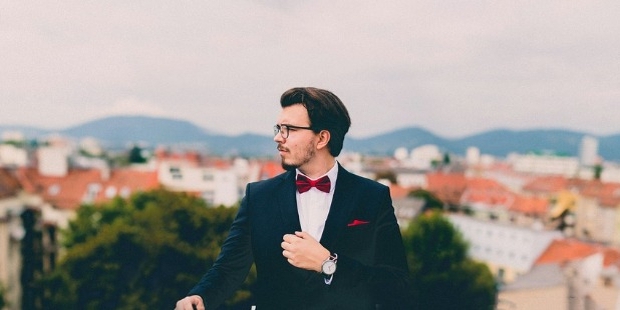
Have you ever found yourself wondering about a person’s reaction? Have you ever got a feeling that though he said “yes”, he actually meant “no”? This situation maybe aptly defined through the nuances of body language, meaning non-verbal communication. Body language could be bodily posture, facial expressions and subtle movements. The way we talk, our tonal quality and pitch, the way we walk or sit, these are all forms of non-verbal communication.
Psychologists stress that any behaviour in the presence of others is communication. This is also known as, Kinesic communication. Body language is a vital aspect of modern communication and relationships. It is of relevance in management and leadership roles. In fact, it is integral to any walk of life, professional or personal.
Basic Concepts of Body Language
Body language is a very important part of non-verbal communication. Like the spoken word, it consists of certain traits and gestures to indicate what a person may want to convey. Body language is a powerful concept. If we are aware of the gestures and signs of body language, we will be able to interpret these subtle signals and develop a heightened sense of understanding people.
1. Positive Body Language
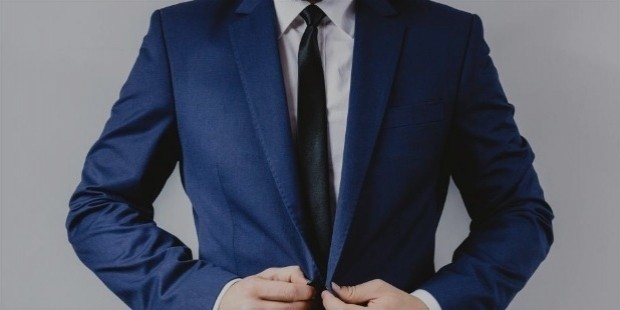
So much maybe conveyed through body postures and expressions. There are some positive signs; relaxed and uncrossed limbs, moving or leaning closer while interacting, maintaining a steady eye contact, conveying shyness by looking away and a genuine smile. All of these gestures symbolise the comfort levels of a person.
2. Negative Body Language
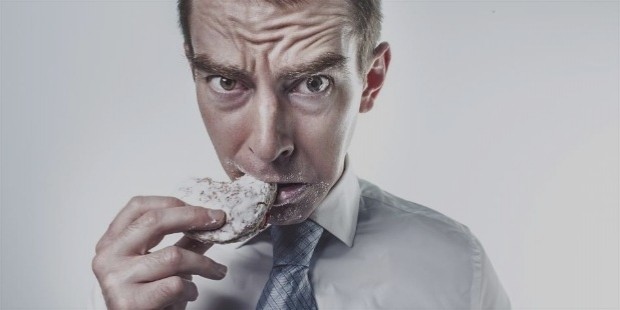
A single sign can mean a myriad of things. Say, crossed arms, this conveys negative body language, as it suggests that a person is physically cold, closed off or frustrated. It may also be interpreted as a sign of having over eaten. The other gestures that indicate negativity are, leaning away during interaction, crossed arms or legs, looking away to the side and being fidgety.
3. Handshake

A handshake conveys so much more than a verbal greeting. According to some psychologists, the physical contact of palm against palm is more significant than the grip. This contact indicates an honesty and openness in the interaction. In a weak grip, the palms do not touch. It conveys a half-hearted and reluctant meeting.
4. Shrugging off The Shoulders
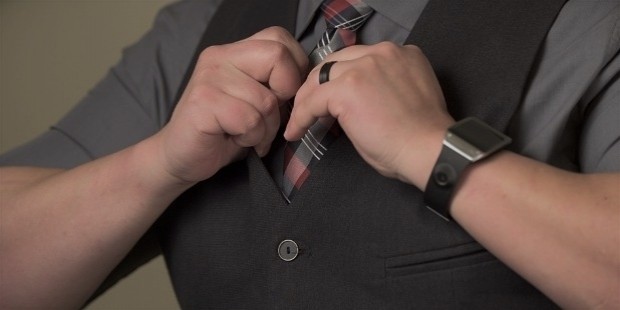
This is a universal gesture, which indicates that a person has not understood what is being conveyed. He is not aware of what is going on around him. Shrugging off shoulders can also be interpreted as the person’s lack of concern or involvement.
5. Eye Contact
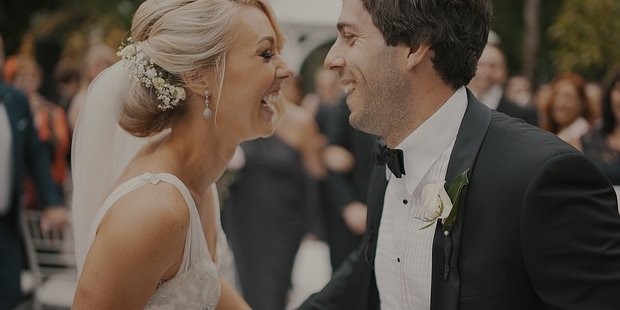
Eye contact has several interpretations in different cultures. Eyes are a powerful tool of expression and convey multiple emotions; happiness, sorrow, anger, pain and resentment. In some countries, eye contact means an honest and forthright demeanour. But bear in mind that too much eye-contact means a person is lying and is uncomfortable.
6. Using the Fingers

We all know that a ‘thumbs up’ sign means either one is asking for a lift, in the sense hitch hiking, or it is to let someone know that all is well. The ‘ring’ gesture also known as the ‘OK’ gesture means that all is fine. While most of these signs are universally common, some maybe country specific.
7. Identifying a Lie

The art of deciphering body language maybe judged from the ability to spot a lie. People who are lying will maintain a stiff upper body posture and prolonged eye contact, which is quite unnerving. Their shoulders will be tense and they wear fake smiles. When people are lying, they place their hand or fingers in front of their mouth and do not directly face the other person.
Understanding Body Language
Body language is a very powerful component of communication. It conveys as much and in some cases even more and proves to be more effective than verbal communication. We may refrain from saying a few things, but our facial expressions and body postures convey it all. Mastering the art of non-verbal communication will help us understand people better and be more empathetic.
1. Power of Facial Expressions
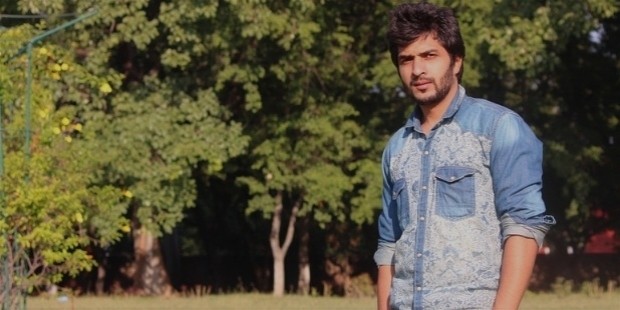
The face is a treasure trove of expressions. Be it the eyes or our smiles, they all convey an array of messages. Emotions ranging from happiness sorrow, anger and fear are conveyed through facial expressions. A smile will convey a happy frame of mind, while a frowning face conveys displeasure and disapproval. A smile can have several meaning, from expressing genuine happiness, to showing sarcasm.
2. Eyes Are The Windows of The Soul
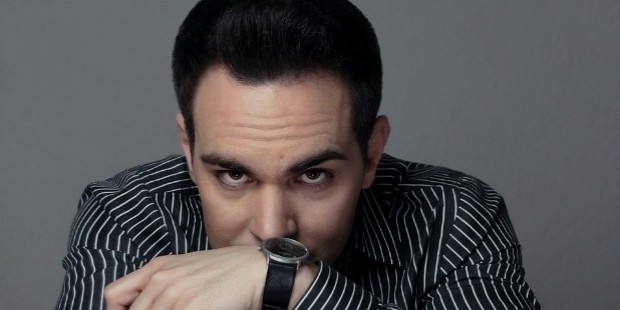
The eyes say it all; they reveal the inner most feelings of a person. When interacting with a person, it is interesting to note if he/she is maintaining a steady eye-contact. This indicates that he/she is interested in the conversation. If a person looks away frequently, it means he/she is distracted. Remember that if a person is blinking very frequently, he is distressed about something.
3. Lip Movement
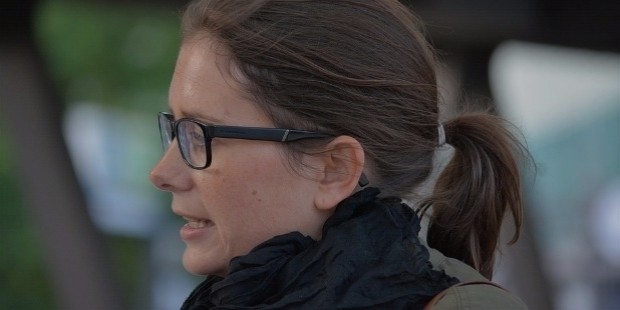
Watch the lips of a person during interaction. A pursed mouth conveys displeasure, chewing of the lip indicates that the person maybe anxious or worried and covering the mouth means that he/she is trying to hide an emotional expression, maybe a smile or a smirk.
4. Head Placement

Holding of your head conveys some simple messages. A head held high denotes confidence and self-assuredness. You do not mind people looking at you. On the contrary, a bowed head is a signal of discomfort at being gazed at. The person probably suffers from low self-confidence levels. The turning of the head simply means a positive acknowledgement.
5. Hand Gestures

Fingers play an important role in non-verbal communication. In fact, they are direct forms of body language. So while a clenched fist could mean anger or solidarity, a ‘thumbs up’ and a ‘thumbs down’ sign indicate approval and disapproval respectively. The ‘ring’ gesture means all is well and the ‘V’ sign indicates victory in some parts of the world.
6. Limbs Form an Integral Part of Body Language

We have a positive and a negative body language. Crossed arms and legs signify a defensive attitude and a closed personality. Hands of hip indicate aggression, while hands behind the back and tapping of fingers indicate boredom. Remember that when a person expands his arms, it is in an attempt to appear commanding and when he keeps his arms close to his body, he is shying away from attention.
7. Shoulders as a Component of Body Language
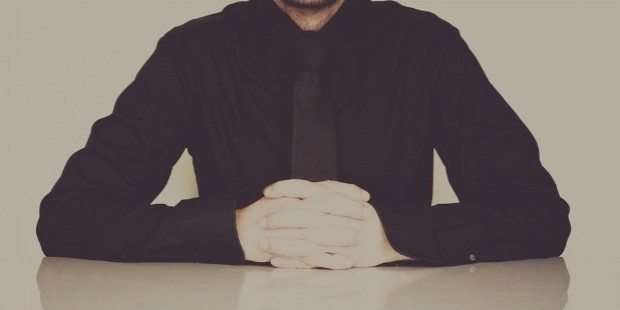
Shoulders speak their own language and this is hardly surprising. We all are aware that shrugging off shoulders means a lack of understanding and knowledge. Note that open and wide shoulders indicate a friendly and approachable demeanour, while closed and hunched shoulders convey an unhappy state of mind and a desire for isolation.
8. Body Posture
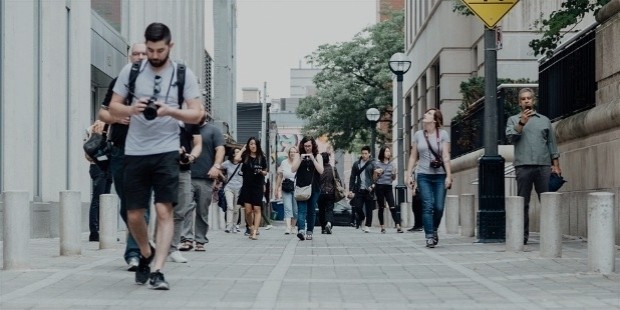
Body posture is an indicator of the person’s state of mind and personality traits. Sitting straight signifies that a person is attentive and focused, while slouching or bending forward means he is bored and disinterested. An open body posture would mean a friendly and forthright personality, while a closed posture is a sign of hostility, anxiety and unfriendly demeanour.
9. Sense of Space

Ever heard of the term, ‘proximics’? Well, it means the space between yourself and another person. The physical space between people during interaction conveys a myriad of messages. The term, ‘intimate space’ denotes a close relationship, while, ‘personal distance’ may be spotted between family members and close friends. Then there is the ‘social distance’, which is exists between acquaintances and the ‘public distance’, which as the term suggests means a public forum. Each of these distance indicate levels of comfort.
10. Signs of Confidence

A confident individual will always create a lasting impression. It hardly requires a practiced eye to identify a confident person in a group. A body posture with shoulders and back straight, steady eye contact and a smiling face, a focused and purposeful hand and arm gestures and a deliberate and clear speech- well that is our man, one in a crowd!
The First Impression
How long does it take you to form an impression of a person when you meet him/her for the first time? Generally, first impressions are made quickly. It is important to remember that most people will judge you within the first few seconds of interactions. First impressions are long lasting, so creating the desired first impression is very essential.
You get only one chance to make the right impression, so put your best foot forward by following these tips.
1. Confidence and an Approachable Nature
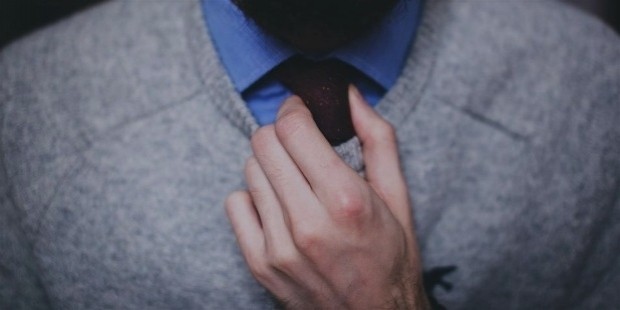
A confident person generates positivity and if you display an approachable demeanour, you automatically make others feel comfortable. Wishing and wearing a smile will further help you in creating the right impression. We are not talking here about being over-friendly, but a pleasing personality is always welcome.
2. A Brief Research

Being well informed about the person you are about to meet may prove helpful. It shows that you are really interested in interacting with the person. A little research beforehand will stand you in good stead, especially at the time of a job interview.
3. Intention & Preparedness

Meeting people with a clear focus and being well prepared signifies a person with a purpose. You would automatically create a favourable impression among the powerful, as they believe that time is money. If you come across as someone with clear intentions, you are bound to leave a lasting first impression on them.
4. Appear Interested and Hold the Attention of Others

Your interest in meeting with people and interacting with them will transmit to them in the first meeting. Let the people you are meeting know that you are genuinely keen on interacting with them. Pay attention to what they have to say. Your right attitude will set the correct mood. You will end up having and enjoying the conversations and making lasting connections.
5. Physical Appearance
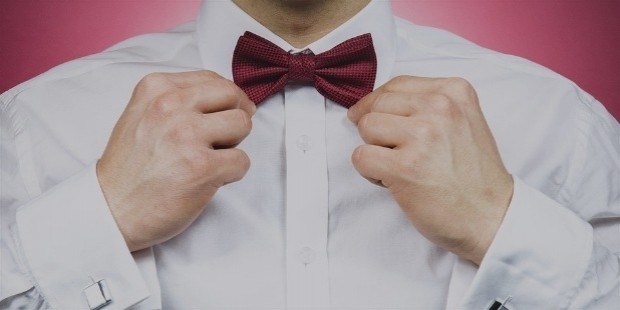
How you dress up for the occasion is vital. It is all about looking presentable. The occasion should decide your outfit for you. If you appear neatly and correctly dressed, you will create a favourable first impression. Remember that the people you are meeting do not know you. They will to a large extent judge you by the way you dress up for the occasion. Your get-up conveys your degree of interest or lack of it.
6. The Appropriate Body Language

Body language is a powerful component of communication. Needless to say then, that it plays a vital role in creating the desired first impression. From the way you walk, sit, your body posture and your facial expressions, all of these convey a message. Remember then to maintain an upright body posture. Do not ignore the way you shake hands!
7. Be Yourself

It may sound cliché, but it is true- be what you are and not what you want to be or what you think others want you to be. It is impossible to fake personalities. Putting up a charade to create a favourable first impression may initially prove successful, but can you sustain it.? In all probability no! You can hardly continue to role play for long periods of time. Present yourself in the best possible manner and for sure you will make a smashing first impression.
Myths about Body Language
Body language calls for an interesting study. We all are aware of some of the basic signs of body language, you know- arms crossed, shifty eyes, etc. To us these gestures indicate certain attitudinal traits. Sorry to disappoint us all here, but generalising body postures may be presumptuous. While these postures maybe true of some at some times, to say that they are universally applicable is a fallacy. Body language is based upon a context and situation. Read on and learn about these myths.
1. Arms Crossed Denotes an Offensive Attitude…..

Well, that may not always be the case. People sitting with their arms crossed could mean they are not in agreement to what is being said, or it could mean they are feeling cold, or it could simply mean that they find it a comfortable position. There is nothing like a “body language template”.
2. Not Maintaining Eye Contact Means Dishonesty…..
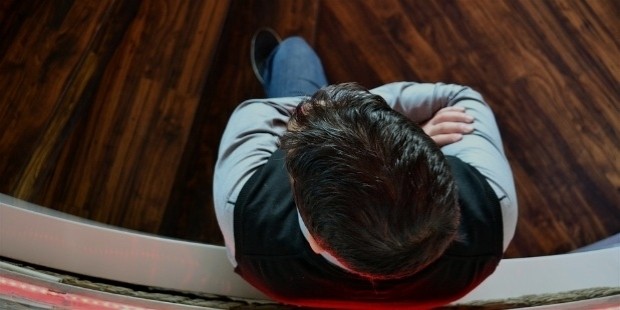
Lack of eye contact need not mean that a person is lying or that there is something dishonest about him. It could just be that he is shy and not comfortable among strangers. Or probably, it could just be that he is preoccupied with something else and is mulling over some questions or an interview he has to face. Also there are studies that insist that a dishonest person maintain longer eye contact.
3. Fidgety People are Hiding Something….

Why should we assume that a person who is restless is trying to hide something? Maybe the person is just nervous. It could be that he has to face a job interview, give an important presentation or take an important decision. A particular body posture need not always mean what we assume.
4. Talking Fast, Touching the Nose and Covering the Mouth Indicate Deception….

These are normal gestures. Some people just talk fast, so why read too much between the lines? A person is touching his nose or covering his mouth, it could simple be that he is suffering from an infection or allergy. He could be suffering from a common cold and does not want to pass the infection!
5. Smiling Faces are Happy People….

Seeing a smiling face is always a treat, but a smile need not necessarily mean a happy person. A person could be smiling only to cover up his nervousness. May be the smile is a smirk. Maybe the person is putting up a façade of all being well, while deep down, he is very troubled.
6. Spotting a Liar through Eye Movement…

This belief is so predominant that the enforcers of law and order are trained to identify criminals through eye-movement during interrogation. While there are theories that looking right and left during questioning means two different things, the fact of the matter is that research has failed to validate this assumption.
7. Hand and Finger Gestures
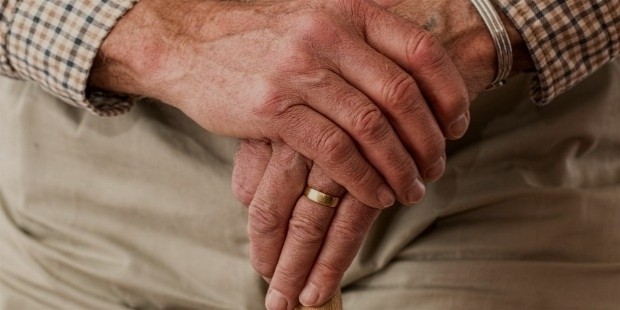
True, but not universally. In different cultures, it means different things. In Greece and some parts of America, a “thumbs up’ sign is an offensive sign. Same may be said for the “V” sign. Greeting someone with a handshake is restricted to certain countries. In some parts of Asia, you bow as a form of greeting, while in European countries you kiss a person on the cheek to greet her/him.
Tips on Body Language
The importance of body language cannot be challenged. It is a powerful component of communication. It is believed that 60-70% of the communication is non-verbal. It would be then wise to practice positive and effective body language. The right body language may just get us that much-desired business deal or create a win-win situation in our personal relationships.
1. The Power Pose

Power, confidence and strength of character are inter-related and important in the power game. So stand tall with your head held high to assume an authoritative role. Spread your legs and your hands. This is one way to appear confident and make a favourable impact upon others even if you were squirming in your pants.
2. Being Attentive
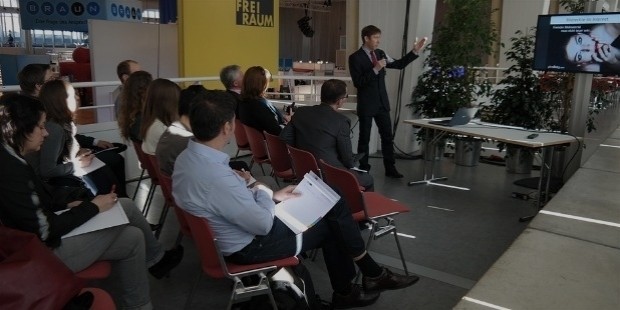
Be a good listener! Effective communication can only happen if you listen to what others have to say. When someone is talking, don’t fidget, check your phone, look around or at your watch. Be attentive, look at the person, make eye-contact and nod your head. It is important to listen just as it is important to be heard. Also, others should know that you are interested in what they have to say. This increases participation.
3. Connecting Through a Handshake and Gestures

A warm and firm handshake speaks volumes. It conveys that you are glad to meet the person and the other immediately feels welcomed. Research has proved that a person is more likely to remember you if you have shaken hands. Talking of gestures, verbal speech when accompanied by gestures proves to be more effective. It increases your credibility with the listener and it is believed that it improves your thinking processes.
4. A Smile Lights up the Environment

A smile spreads positivity. It does wonders to your own well-being and also shows that you are an approachable and pleasant person. A smile triggers a positive response in the others as well. It denotes that you are listening to the person and that you understand and are concerned about his/her welfare.
5. Consistent Vocal Pitch
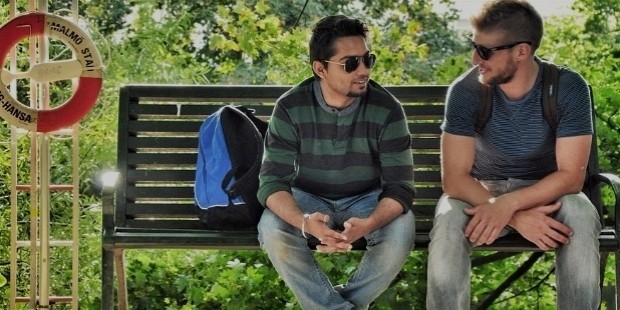
Keep a steady and low vocal pitch. The quality, tone and pitch of your voice reflect on your personality. A person who speaks loudly is judged negatively, as being less empathetic and nervous. Maintain a low and steady pitch and you will appear authoritative.
6. Eye-Contact
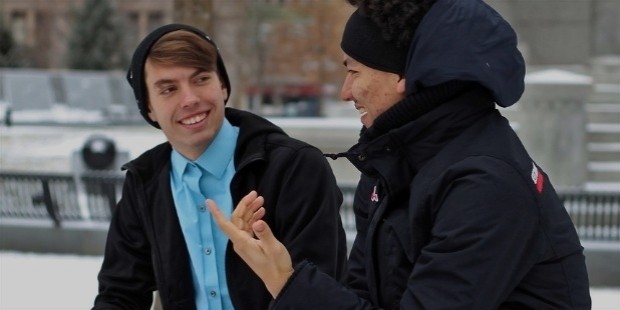
Eyes mirror our soul! They play a crucial role in communication. Remember then to maintain a steady eye contact when interacting with someone. This shows that you are interested in the conversation. But at the same time don’t appear as if you are staring. Avoid blinking excessively as this indicates that you are uncomfortable with the current conversation.
7. Mirror Expressions and Postures

What is mirroring expressions and postures? Well doing this suggests that you agree, understand and accept what the other person is saying. When you reflect other people’s intentions, it could culminate into a budding and fruitful association.
Reading Body Language
Body language is intrinsic to communication. It constitutes 60-70% of communication. The ability to understand body language will help you build better and closer relationships. Mastering the art of reading the non-verbal cues will serve you well in dealing with people and situations. Concentrate on certain obvious non-verbal clues to understand body language.
1. The Mouth

It is near impossible to fake a genuine smile. A genuine smile is one in which the lips and the eyes are involved. In a fake smile, it is only the lips that twitch. Now what does pursed lips mean. Very simple, it conveys displeasure and discomfort.
2. Open Palm

Have you ever noticed that in a court of law, a person in the witness box takes an oath by placing one hand on a holy text and the other is held up in the air facing the speaker? That is because an open palm is associated with honesty, truth and submission to the law. Similarly, an open palm implies an honest and forthright character.
3. A Closed Fist and a Pointed Finger

This may not be something new for you. A closed fist alone is a show of anger. A closed fist with a pointed finger means an attempt to dominate. It is as if the speaker is forcing his listeners into submission. This gestures undoubtedly triggers off negative vibes in the others.
4. Signs of Anxiety

An anxious person will resort to blinking and will display a myriad of facial expressions. His mouth will stretch into a thin line. He will be fidgety and will fiddle with his hands. He is unable to stand firm; his legs are jittery and he taps his feet.
5. Embarrassment and Shyness

So many times we are embarrassed about something or the other. We can avoid putting someone in an embarrassing spot if we can identify the basic expressions of embarrassment. It is conveyed by averting the eyes or looking away, turning of the head, and controlled or tense smiles. Looking down at the floor also indicates embarrassment. It could also mean that the person is shy.
6. Eyes are a Powerful Tool of Communication

Eyes reveal everything that you may need to know about a person. When people are engaged in an interesting conversation, their eyes remain focused on their partner's face most of the time. They may look here and there for some time, but their gaze will return to the other person’s eyes. It is believed that when people look up and to the right during a conversation, they are bored and have no longer focused on the conversation. Maintaining a steady eye-contact means an honest person, but aggressive eye contact would mean the person is lying.
7. Shoulders as a Component of Body Language
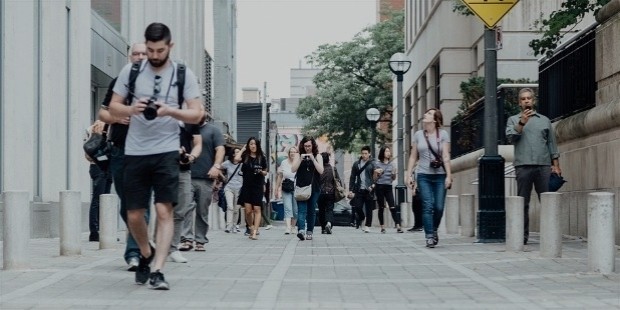
Shoulders speak their own language and this is hardly surprising. We all are aware that shrugging off shoulders means a lack of understanding and knowledge. Note that open and wide shoulders indicate a friendly and approachable demeanour, while closed and hunched shoulders convey an unhappy state of mind and a desire for isolation.
8. Raised Eyebrows

Research on body language indicates that people often raise their eyebrows when worried, scared or surprised. This gesture implies a certain amount of discomfort. So next time when someone compliments you on your new hairstyle or outfit with their eyebrows raised, it may not be genuine.
9. Mirror Expressions and Postures

What is to mirror expressions and postures? Well doing this suggests that you agree, understand and accept what the other person is saying. When you reflect other people’s intentions, it could culminate into a budding and fruitful association.
10. Crossed Legs

Crossed legs are indicators of resistance and low receptivity. They give out very negative signals during negotiations. Research has proved that none of the deals were successful when one of the negotiators had their legs crossed. According to Psychology, crossed legs symbolise that such people are mentally, emotionally and physically closed off and not open to ideas and suggestions. Automatically, their rigid body language conveys that they would be unwilling to budge in negotiations.
Power of Body Language
Body Language is a powerful component of non-verbal communication. In fact, it is ingrained in our lives and constitutes 60-70% of communication.
1. Mastering the Art of Body Language

The unspoken has a greater impact than the spoken word. For a person who has mastered the art of body language, he can easily understand the hidden meaning behind specific gestures, stances, facial cues and body movements arming him with a sixth sense that can greatly alter his life, boost his career and help in trouble-shooting!
2. First Impressions…
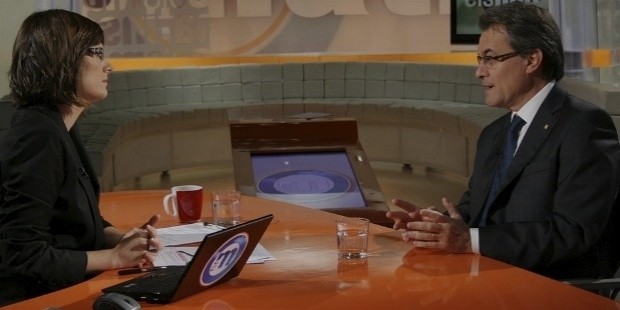
How long does it take you to form an impression of a person you are meeting for the first time? Generally, first impressions are made quickly. It is important to remember that most people will form an opinion of you within the first few seconds of interactions depending upon your body language!
3. The Power Pose

Let us talk about the “power pose” here. A power pose entails that you stand straight with your head held high. Needless to say, you this pose would help you get better jobs and help you become a successful person in the long run.
4. The Power of a Smile

Who can deny or contest the power of a smile? It transmits positive vibes and conveys to others that you are a pleasant and empathetic person. Positivity generates positivity, so a simple genuine smile can set a cycle of happiness.
A Complete List of Different Types of Body Language
The art of body language is a practiced skill. Its power and influence cannot be ignored. Body language is intrinsic to communication. It constitutes 60-70% of communication. The ability to understand body language will help you build better and closer relationships. Mastering the art of reading the non-verbal cues will serve you well in dealing with people and situations.
1. An Aggressive Body Stance
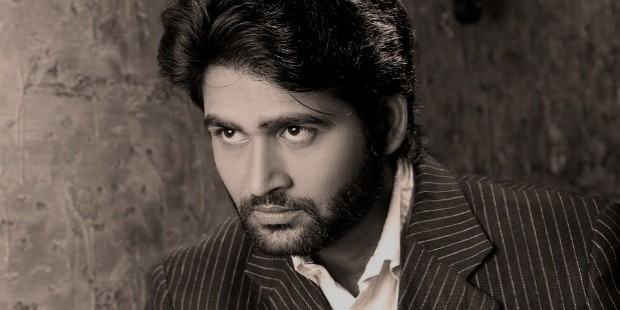
Body language comprises positive and negative postures, gestures and facial expressions. Certain specific non-verbal cues convey the unpleasant expression of aggression. Fighting is a negative emotion, a socially unacceptable behaviour and best avoided.
- 1. Facial expressions such as, pursed lips, frowns and long stares imply a threatening stance.
- 2. Clenched fists are another signal of aggression.
- 3. Invading someone’s private zone is also offensive.
- 4. There are several types of insulting gestures; shaking a fist and head buffs to incite a person to behave in an unbecoming fashion.
2. Assertiveness
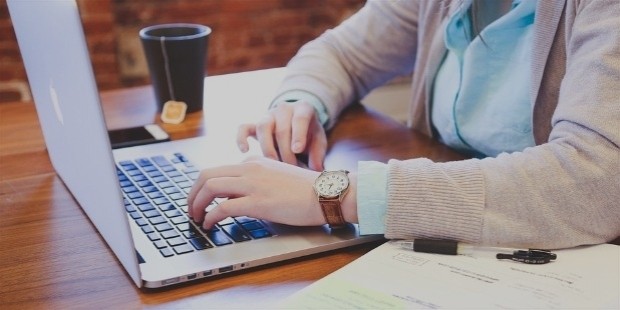
What do you understand by assertiveness? It simply means expressing yourself with authority in a mature manner without getting aggressive and offensive. We could closely associate the “power pose” with assertiveness. You can assert your point of view or your rights firmly and stand your ground.
- 1. An assertive body posture is controlled and smooth. There are no signs of tension. The body muscles are relaxed and the body is perfectly balanced. The feet are planted firmly on the ground.
- 2. The tonal quality and pitch is consistent and smooth. The style of speaking is friendly and approachable.
- 3. The body posture is open and inviting so that the others feel comfortable to express themselves as well. They are also more receptive to the person asserting himself.
3. Being Attentive
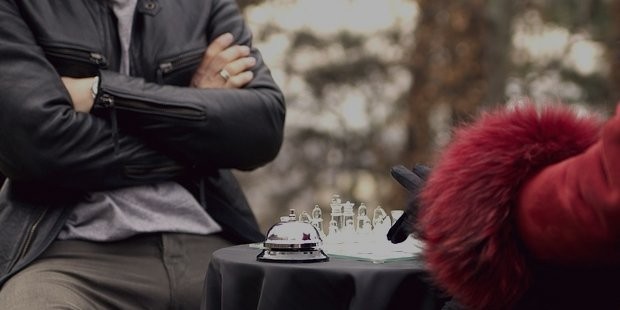
Be a good listener! Effective communication can only happen if you listen to what others have to say. Be attentive, look at the person, make eye-contact and nod your head. It is important to listen just as it is important to be heard. Also, others should know that you are interested in what they have to say. This increases participation.
- 1. Be a good listener. Pay attention to what someone has to say. Avoid taking calls, checking your watch and messages and looking around.
- 2. Maintain a firm body posture and do not fidget.
- 3. You can exhibit your level of interest by leaning forward towards the speaker and tilting your head slightly. This shows that you are curious.
- 4. Maintaining steady eye-contact is another sign of being attentive.
4. Boredom

The body language associated with boredom is very obvious. Your efforts to convince a disinterested person will be in vain, so don’t waste your time and energy.
- 1. Fidgeting and looking around rather than at the person who is speaking are sure signs of boredom.
- 2. A bored person would be constantly looking at his watch.
- 3. He will drum his fingers, tap his feet, yawn and wear a blank look on his face.
- 4. He slouches and sags in his seat.
5. Closed Body Language

Most of us go on the defensive and distance ourselves from a situation we perceive as threatening. Sometimes we are not comfortable with a person or in a situation and choose to shut ourselves off. A closed body language means closing the body up literally, locking of limbs together and in extreme cases curling up into a tight ball.
- 1. A closed person will fold his arms across his chest. He will fold his hands tightly.
- 2. His shoulders and arms will be tensed.
- 3. His legs will also be crossed tightly.
- 4. He will be looking away from the person and his head maybe tilted downwards.
6. Displaying Confidence
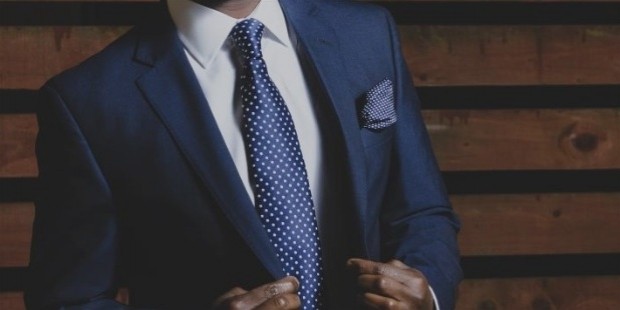
A confident individual will always create a lasting impression. It hardly requires a practiced eye to identify a confident person in a group. A body posture with shoulders and back straight, steady eye contact and a smiling face, a focused and purposeful hand and arm gestures and a deliberate and clear speech- well that is our man, one in a crowd!
- 1. A confident person stands his ground. His feet are firmly placed on the ground.
- 2. He sits comfortably, leaning back and maintains a relaxed posture.
- 3. The confident person holds his head and chin upright.
- 4. He holds his hands loosely and his movements are unhurried, steady and smooth.
- 5. His speech is a combination of pauses and silence.
- 6. A confident person greets another in an assertive manner.
7. Deception

Beware of those trying to deceive you. He will display a body language quite contrary to his intentions, but this façade itself is a giveaway. People resort to deception to either compel someone to do as they wish or to escape the consequences of a wrong act.
- 1. A deceptive person suffers from anxiety of being discovered. This fear exhibits itself through sweating, rapid changes in tone and sudden movements.
- 2. He may try to appear friendly to avoid detection. There will be forced smiles.
- 3. He will try to hold his body still and hesitate while speaking.
- 4. He will be generally distracted and fidget around.
8. Domination
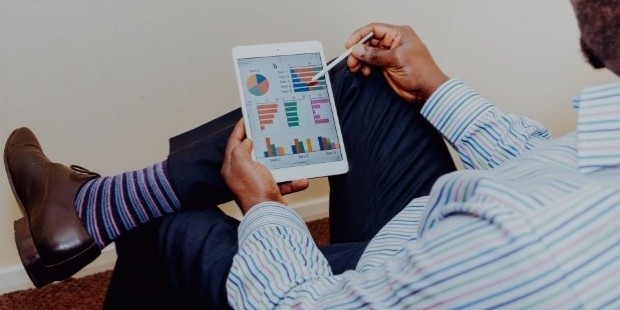
There is a relationship between dominant body language and an aggressive one. The body posture is upright and open but sensitivity to pain is less. The attempt is to control. There is a gender difference in body language, so while women trying to dominate make themselves small, men open up and spread themselves.
- 1. The dominating person stands with his legs apart and chest and shoulders thrust out.
- 2. He will try to appear taller than he is.
- 3. His dominance will come to fore in his behaviour in social gatherings. He is prone to interrupt and swear.
- 4. He will insist on claiming a bigger office space, a better laptop, etc. He will also try and flaunt his possessions.
- 5. A dominating person has scant respect for another’s privacy or rights and claims them as his own.
- 6. He prefers sitting or standing in a position where he is easily visible.
- 7. He prefers to control conversations, by interrupting and not allowing others a word.
- 8. He is critical and insulting towards others, especially his subordinates.
- 9. His facials expressions depict frowns and pursed lips.
9. Emotional Displays
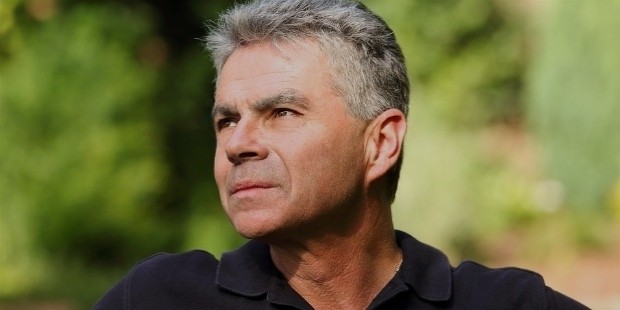
A human enjoys a multitude of emotions ranging from the positive to the negative. Each of these emotions has their own set of non-verbal cues. Emotions may be more effectively conveyed through body postures and facial expressions.
- 1. Anger, a powerful human emotion finds its expression in clenched fists, flushed neck and face and aggressive body language.
- 2. A person suffering from fear will break out in a cold sweat. His voice will be unsteady and face pale. He will avoid eye-contact. His body language will be defensive.
- 3. When we are sad, we end up crying. Our body droops and our lips tremble.
- 4. An embarrassed person will avoid eye-contact. He will try to fake a smile and change the topic of conversation to cover up his discomfort. His face and neck will be flushed.
- 5. We display surprise by raising our eyebrows, widening our eyes and moving backwards suddenly.
- 6. A happy person will display a relaxed body posture, open body language and a genuine smile.
10. Greetings as a Component of Body Language
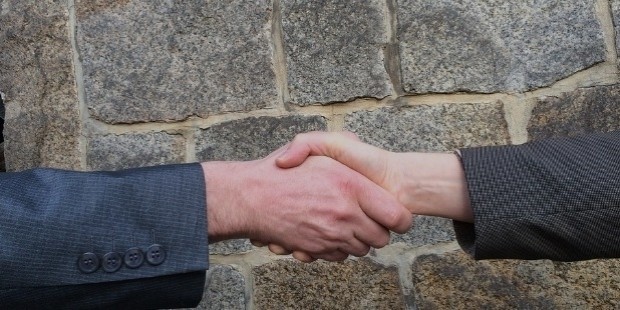
Greeting is culture centric. In the West, a firm handshake forms a part of the greeting process, while in some parts of Asia, you bow to greet someone. A greeting also depends upon the formality of the occasion.
- 1. In a handshake, the physical contact of palm against palm is more significant than the grip. This contact indicates an honesty and openness in the interaction.
- 2. In a weak grip, the palms do not touch. It conveys a half-hearted and reluctant meeting.
- 3. Bowing to greet a person indicates respect, but again this depends upon the degree of bending while bowing.
11. An Open Body Language

An open body language conveys honesty and transparency. A person displaying openness through his body posture is receptive to suggestions and advice. He is patient and empathetic. Such a person is a good listener and enjoys equal conversations. He is open to change, meaning changing his attitude or opinion as the situation demands.
- 1. His arms and legs are relaxed and not crossed.
- 2. He gestures with his arms while talking.
- 3. He looks at the person who is speaking and maintains a steady eye-contact.
- 4. Such a person is gentle and tolerant in his behaviour. He exudes warmth and makes everyone around him feel comfortable.
12. The Power Pose
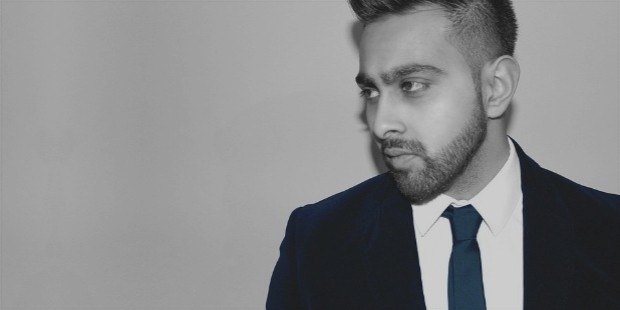
Power, confidence and strength of character are inter-related and important in the power game. So stand tall with your head held high to assume an authoritative role. Spread your legs and your hands. This is one way to appear confident and make a favourable impact upon others even if you were squirming in your pants.
- 1. An authoritative person will have a firm handshake.
- 2. He will stand tall and upright with his head held high.
- 3. His tone of speaking is assertive without being offensive.
- 4. He exhibits control over his emotions, which does not mean that he is not emotional.
- 5. He walks with a swagger
13. Relaxation is Bliss

A relaxed body indicates a happy frame of mind. Such a person is at ease and comfortable with his surroundings. He is at peace with his life in general and a satisfied soul.
- 1. A relaxed person sits with his torso well-balanced and tilted to one side.
- 2. His breathing is steady and normal.
- 3. His limbs are relaxed and his voice even and smooth.
- 4. He smiles a genuine smile.
14. Romantic Body Language
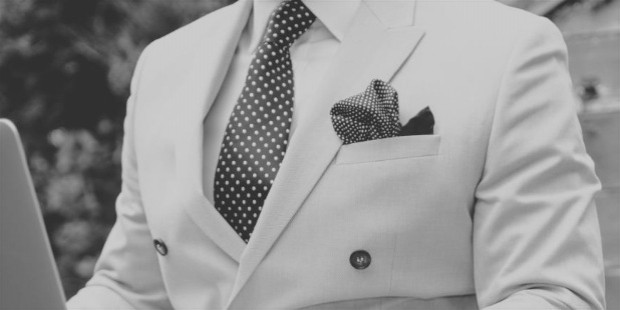
The first signal of a romantic body posture is indicating an interest in the other person. Here the eyes play a major role. It is the way we look at the person that conveys the message that we are interested. We become conscious of our appearance and start fidgeting with our hair and clothes.
- 1. A person romantically inclined towards another will look at him/her and look away, only to once again revert his/her gaze at the person.
- 2. He/she makes the effort to look attractive to the person concerned.
- 3. He/she tends to lean towards the person.
- 4. Feelings of shyness overcome the person.
15. The Right Body Language while Selling
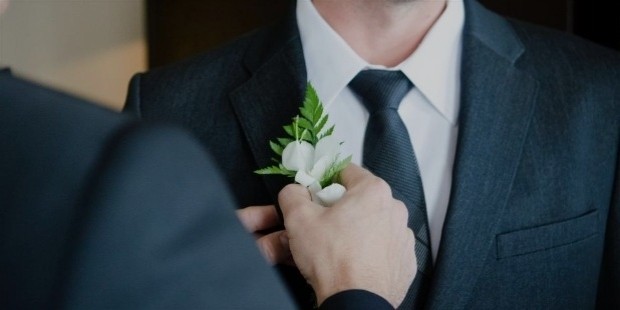
This is for the sales-persons out there! Selling is a tricky business. It is imperative to maintain an open body language for sales-persons. They need to establish the perfect balance between assertiveness and submissiveness. Of course some amount of accommodation may be necessary depending upon the context.
- 1. Be a good listener and mirror the customers.
- 2. Lean towards your customer in order to forge a bond with them. Leaning also indicates a respectful attitude.
- 3. Display an interest in their point of view.
- 4. Use gesture with open palms. This indicates that you are open-minded.
- 5. Be assertive but not pushy.
16. Submissive Body Language

The first sign of a submissive body language is lack of confidence and fear. Since the person also apprehends danger, he could be on the defensive. But primarily, a submissive person tries to convey his lack of aggressive intention. He displays closed body language.
- 1. A submissive person exhibits a hunched and crouched body posture to the point of becoming invisible.
- 2. He lowers his body striving to indicate that he means no threat.
- 3. His head is bowed and his eyes mirror vulnerability.
- 4. He looks attentively at the other person.
- 5. His movements may be jerky and his smile strained.
17. A Defensive Stance

The feeling of threat or impending danger gives out negative vibes in us. We automatically adopt a defensive posture. A defensive body language has its origin in the feeling of being threatened and the possibility of attack. Such a person may also display an aggressive body language as a result of feeling threatened.
- 1. A person with defensive body posture will cover his most vulnerable body parts.
- 2. His chin is lowered.
- 3. His arms are held across his chest or his face.
- 4. He may use his arms as a barrier. His arms may be held in a manner so as to ward off an attack.
- 5. He will look in all possible directions trying to find an escape route.
- 6. If he adopts an aggressive body language, his body will be held erect and thrust forward.
How to build relationship, successful business ventures, how do we reach out to someone sitting miles away? The key word here is communication, verbal or non-verbal. We all know about the universal body language. We also know that it constitutes 60-70% of communication. In fact the unspoken word creates a greater impact than the spoken one. Practicing positive body language and deciphering the cues we get from others is very crucial to personal growth and professional success. The knowledge of body language will give us the power to understand better and therefore implement effectively!









